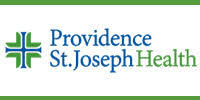- February 1,2016 | ISSN 1940-6967
- The National Association Of Medical Doctors
Featured Sponsors
Physician Assistant Salaries Close To $100k
By Nina Flannigan
Dive Brief:
The National Commission on Certification of Physician Assistants' 2016 annual report found the national average PA salary was $95,000 in 2014, and up to $105,000 in Alaska, Arizona, California, Connecticut, and Minnesota.
The report also found in 2014 most PAs (36.6%) were between the ages of 30 and 39; more than half were men (66.7%); and about 22.4% were multi-lingual (Spanish, French, and Russian).
It was reported last that March the U.S. may see a shortage of 90,000 physicians by 2025.
Dive Insight:
In 2014, the majority of PAs worked in office-based practices (39.8%), followed by hospitals (37.3%); close to 20% worked in family/general medicine and surgical specialities, followed by emergency medicine (13.8%). They clock in about 41 work hours a week, seeing an average of 76 patients, according to the report.
Several drivers are contributing to the physician shortage, including the ACA and an aging population.
The greatest physician shortage will be surgeons due to increased demand for treatment of chronic diseases.
Rural areas are hit especially hard even though the government provides incentives for physicians to practice in shortage areas. A study by the Robert Graham Center for Policy Studies in Family Medicine and Primary Care showed there are about 68 primary care physicians for every 100,000 residents in rural areas, compared to 84 primary care physicians per 100,000 residents in urban areas.
Articles in this issue:
- What Doctors Need To Know About Zika Virus
- Governor Declares Zika Emergency, 10 Cases In New York, 9 In Florida
- What Happens To Residents When The Physician Employment Bubble Pops?
- One Million Patients Lose Their Doctors (Every Year) To Suicide And Nobody Tells Them The Truth
- Why JFK And Goldwater Shared A Doctor
- Physician Assistant Salaries Close To $100k
- 10 Free Cloud Based Tools For Physicians
Top Physician Opportunities
Journal of Medicine Sign Up
Get the Journal of Medicine delivered to your inbox.
In This Issue
- What Doctors Need To Know About Zika Virus
- Governor Declares Zika Emergency, 10 Cases In New York, 9 In Florida
- What Happens To Residents When The Physician Employment Bubble Pops?
- One Million Patients Lose Their Doctors (Every Year) To Suicide And Nobody Tells Them The Truth
- Why JFK And Goldwater Shared A Doctor
- Physician Assistant Salaries Close To $100k
- 10 Free Cloud Based Tools For Physicians
Archives
Masthead
-
- Editor-in Chief:
- Theodore Massey
- Editor:
- Robert Sokonow
- Editorial Staff:
- Musaba Dekau
Lin Takahashi
Thomas Levine
Cynthia Casteneda Avina
Ronald Harvinger
Lisa Andonis
Leave a Comment
Please keep in mind that all comments are moderated. Please do not use a spam keyword or a domain as your name, or else it will be deleted. Let's have a personal and meaningful conversation instead. Thanks for your comments!















*This site is protected by reCAPTCHA and the Google Privacy Policy and Terms of Service apply.